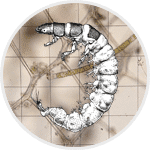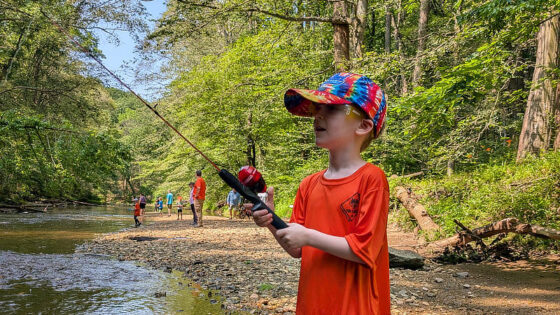 Stroud Water Research Center may be closed to the public during the coronavirus crisis, but the world underwater is teeming with life. Net-spinning caddisfly larvae (Family Hydropsychidae) are busy using homespun nets to capture small particles like leaf detritus and even animal parts from the water column. Similar to spiders, this crafty critter spins its special net out of silk. Each silk thread is placed in just the right spot to create mesh webbing that stretches and balloons with food in the water’s current. Then, the insect larva feasts directly off the silk net. No silverware needed!
Stroud Water Research Center may be closed to the public during the coronavirus crisis, but the world underwater is teeming with life. Net-spinning caddisfly larvae (Family Hydropsychidae) are busy using homespun nets to capture small particles like leaf detritus and even animal parts from the water column. Similar to spiders, this crafty critter spins its special net out of silk. Each silk thread is placed in just the right spot to create mesh webbing that stretches and balloons with food in the water’s current. Then, the insect larva feasts directly off the silk net. No silverware needed!
As our stream’s resident Spiderman, the net-spinning caddisfly is not the only one that benefits from its unique feeding strategy. Much like beavers that build structures like dams or plants that hold together sediment on riverbanks, net-spinning caddisflies are ecosystem engineers, or organisms that maintain, modify, or create habitats to the benefit of the entire ecosystem.
In this family-friendly video created by the Stroud Center, Montana State University, and San Francisco State University with funding from the National Science Foundation, watch these ROCKSTARS use silk to bind together river rocks as large as oranges!
Learn more: Whether you’re an adult passionate about stream life and citizen science, or a caregiver/educator creatively engaging students in environmental STEM topics, the Rock Pack Experiment builds exciting, real-world connections among stream ecology, engineering, AND geomorphology!



